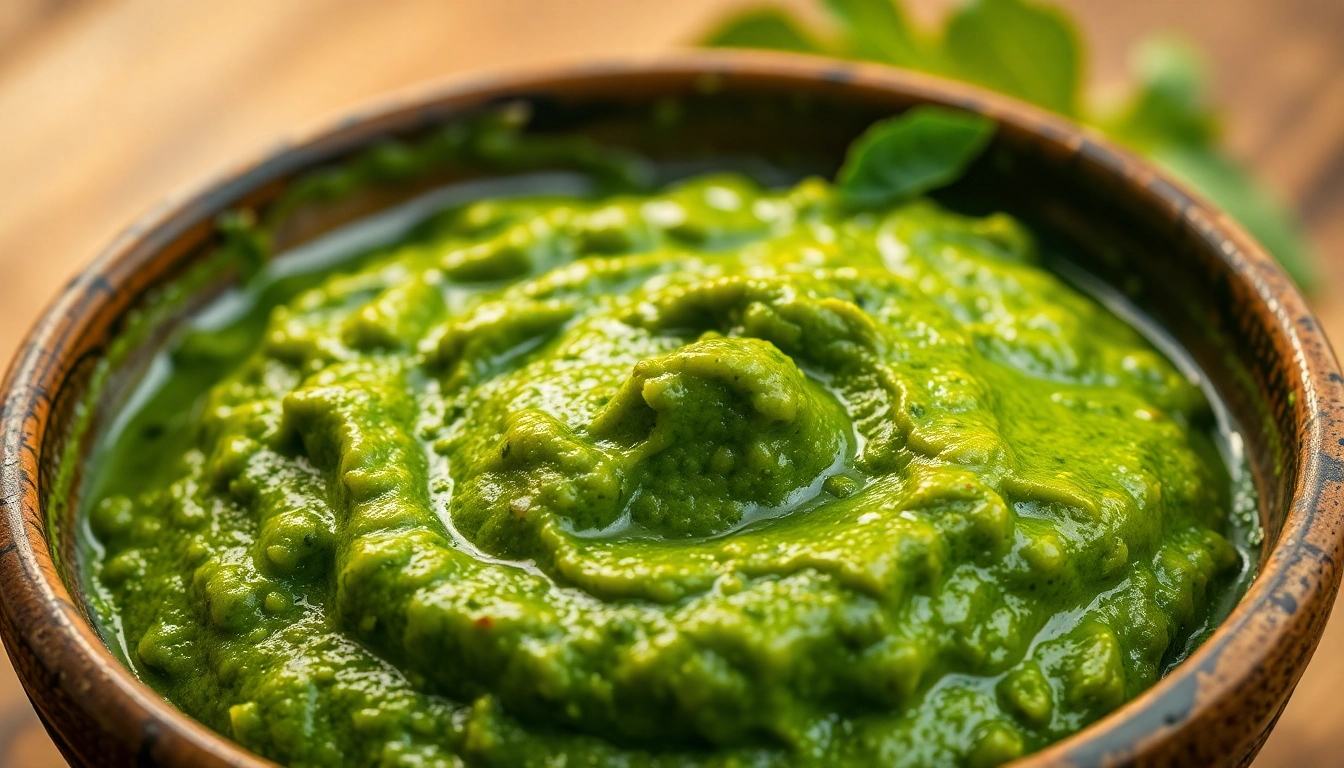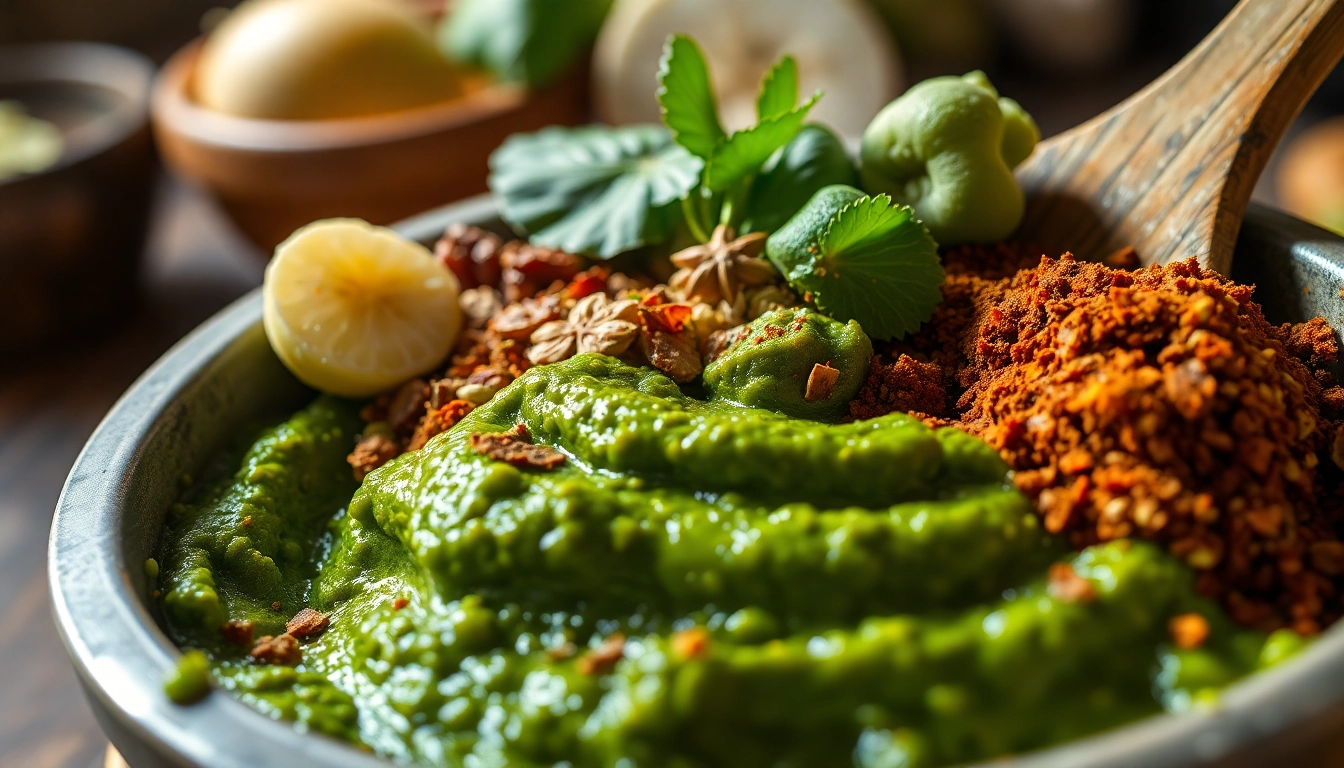Introduction to Green Masala Paste: The Foundation of Authentic Flavors
Green masala paste is a cornerstone in numerous culinary traditions, especially in Indian and Southeast Asian cuisines. Renowned for its vibrant color, fresh aroma, and complex flavor profile, it elevates dishes by adding depth, freshness, and a burst of herbal vitality. As a professional food manufacturer and exporter, Spice Nest proudly specializes in crafting high-quality Green Masala Paste, harnessing the finest ingredients and traditional techniques to deliver authentic taste experiences to global markets. Understanding the nuances of this versatile ingredient—from its ingredients and regional variations to health benefits and culinary applications—is essential for chefs, food entrepreneurs, and home cooks aiming to incorporate genuine flavors into their dishes.
Understanding Green Masala Paste: Ingredients and Variations
Main Ingredients Used in Green Masala Paste
At its core, green masala paste is a harmonious blend of herbs, spices, and sometimes acidic components that together create a fresh, tangy, and spicy flavor profile. The primary ingredients typically include fresh coriander leaves (cilantro), mint leaves, green chilies, garlic, ginger, and lemon or lime juice. Additional elements like coconut, green mango, or fresh herbs such as basil or fenugreek may be incorporated to deepen the flavor.
High-quality green masala paste often features roasted or raw spices such as cumin, coriander seeds, black pepper, and cardamom, ground meticulously to preserve aroma and potency. The use of fresh ingredients not only enhances flavor but also boosts nutritional value. Commercially, Spice Nest ensures that each batch is crafted with precision, maintaining consistency and maximum freshness, which is critical for food service providers aiming for authentic taste.
Regional Differences and Flavor Profiles
Green masala paste varies distinctly across regions, influenced by local ingredients, cultural preferences, and culinary traditions. For instance, in South Indian cuisine, the paste might incorporate coconut for a richer, creamier profile, while in North Indian or Rajasthani dishes, mint and cilantro dominate with a more herbaceous and tangy note.
In Southeast Asia, especially Thai and Vietnamese cooking, green pastes like Thai green curry paste blend green chilies, lime leaves, lemongrass, and kaffir lime to create bold, aromatic flavors. Meanwhile, Gujarati and Rajasthani variants may include a touch of fennel seeds or coriander for a slightly different aroma and flavor intensity. Spoon in the distinctive regional flavors when creating your signature dishes to appeal to diverse taste buds and culinary demands.
How Green Masala Varies Across Cuisines
The versatility of green masala paste allows it to adapt seamlessly to different culinary styles. In Indian cooking, it serves as the base for curries, marinations, and chutneys, imparting freshness and spice. In Thai cuisine, it forms the core of green curries, providing a balance of heat, herbs, and citrus. The key to customizing green masala for various cuisines lies in adjusting the ingredient ratios and incorporating regional herbs and spices.
For example, adjusting the amount of green chilies can modify the heat level, while adding or omitting coconut can influence richness. Spice Nest’s formulations respect regional authenticity, offering variants tailored for specific cuisines, ensuring chefs and foodpreneurs can deliver authentic tastes without ambiguity or compromise.
Health Benefits and Nutritional Value of Green Masala Paste
Rich in Antioxidants and Vitamins
Green masala paste is packed with antioxidants from herbs like cilantro and mint, which contain flavonoids, polyphenols, and essential oils. These compounds help combat oxidative stress, reducing the risk of chronic diseases. Additionally, ingredients like coriander and green chilies provide vital vitamins, including vitamin C, vitamin K, and several B-complex vitamins, contributing to overall wellness.
Regular consumption of green masala-infused dishes can support skin health, improve digestion, and enhance metabolic functions owing to their abundant nutrient profile.
Boosting Immunity with Natural Herbs
The herbal components in green masala—particularly mint, cilantro, and lemon—are renowned for their immune-boosting properties. Mint is known for its anti-inflammatory and antimicrobial effects, while cilantro is rich in antioxidants and detoxifying agents. Lime or lemon juice adds vitamin C, essential for immune function. Together, these ingredients strengthen the body’s defenses and promote overall vitality.
Incorporating green masala paste into daily meals is an easy, flavorful way to enhance immunity and promote health naturally.
Incorporating Into a Balanced Diet
Green masala paste is a versatile ingredient that can be seamlessly integrated into a balanced diet. It complements lean proteins like chicken, fish, or legumes, and enhances vegetable dishes. Using it as a marinade or a base for soups and stews boosts flavor while retaining nutritional integrity. When selecting or preparing green masala paste, opting for organic and preservative-free options like those from Spice Nest ensures maximum health benefits.
Cooking Techniques and Recipes Featuring Green Masala Paste
Marination and Grilling Tips
The vibrant flavors of green masala paste make it ideal as a marinade for grilling or roasting. To maximize flavor infusion, coat your preferred protein with the paste at least 2-3 hours before cooking. For best results, allow the marinated item to rest in a refrigerator, enabling the herbs and spices to penetrate thoroughly.
Grilling over medium-high heat preserves the fresh aromas and prevents burning of the herbs. Baste periodically with additional green masala for enhanced flavor and moisture retention.
Signature Dishes and Innovative Uses
Green masala paste is the secret ingredient behind various signature dishes, such as Indian coriander-mint chutney, Thai green curry, and Vietnamese grilled meats. Innovative chefs use it in fusion recipes, like green masala pizza, wraps, or as a topping for grilled vegetables.
For vegetarians, it enriches paneer or tofu kebabs, stir-fries, and salads. The versatility allows you to explore global cuisine intersections, enhancing your menu with authentic flavors.
Step-by-Step Recipe Guides for Beginners
One simple recipe to start with is Green Herb Chicken Marinade:
- Mix 3 tablespoons of Spice Nest’s Green Masala Paste with 2 tablespoons of yogurt.
- Add salt and lemon juice to taste.
- Marinate chicken pieces for at least 2 hours.
- Grill or pan-fry until cooked through.
This straightforward method introduces beginners to the use of green masala paste, resulting in a flavorful, tender dish with vibrant herbal notes.
Choosing and Storing Quality Green Masala Paste
Factors to Consider When Purchasing
When selecting green masala paste, prioritize freshness, ingredient authenticity, and absence of preservatives. Certified manufacturers like Spice Nest ensure adherence to quality standards, offering products that are 100% natural and pure. Check labels for ingredient lists that highlight fresh herbs, organic spices, and minimal additives.
Storage Tips for Freshness and Longevity
Green masala paste should be stored in airtight containers, preferably in the refrigerator, to maintain its aroma and potency. For long-term storage, freezing in small portions helps preserve flavor without degradation. Always use clean utensils to avoid contamination.
How to Identify Authentic and High-Quality Paste
Authentic green masala paste exhibits vibrant green color, fresh herbal aroma, and a smooth, consistent texture. High-quality pastes from reputable brands will be free from artificial preservatives, coloring agents, or fillers. Buying directly from trusted manufacturers ensures product purity and quality assurance.
Business Opportunities with Green Masala Paste in the Global Market
Export Potential and Target Markets
The increasing global demand for authentic ethnic ingredients positions green masala paste as a lucrative export product. Major markets include North America, Europe, Australia, and parts of Asia, where consumers seek premium, natural, and organic food ingredients. Exporting through certified suppliers like Spice Nest enables businesses to meet strict international standards, opening doors to supermarkets, specialty stores, and online retail platforms.
Branding and Packaging Strategies
Effective branding emphasizes authenticity, health benefits, and cultural heritage. Packaging should be attractive, eco-friendly, and clearly showcase ingredient quality, usage suggestions, and certifications. Transparent labeling builds consumer trust and encourages brand loyalty.
Distribution Channels and Marketing Tips
Utilize multiple channels including food expos, online marketplaces, and partnerships with distributors. Digital marketing strategies, such as social media campaigns, recipes, and influencer collaborations, can boost visibility. Highlighting certifications, organic status, and traditional preparation methods differentiates your product in a competitive landscape.

